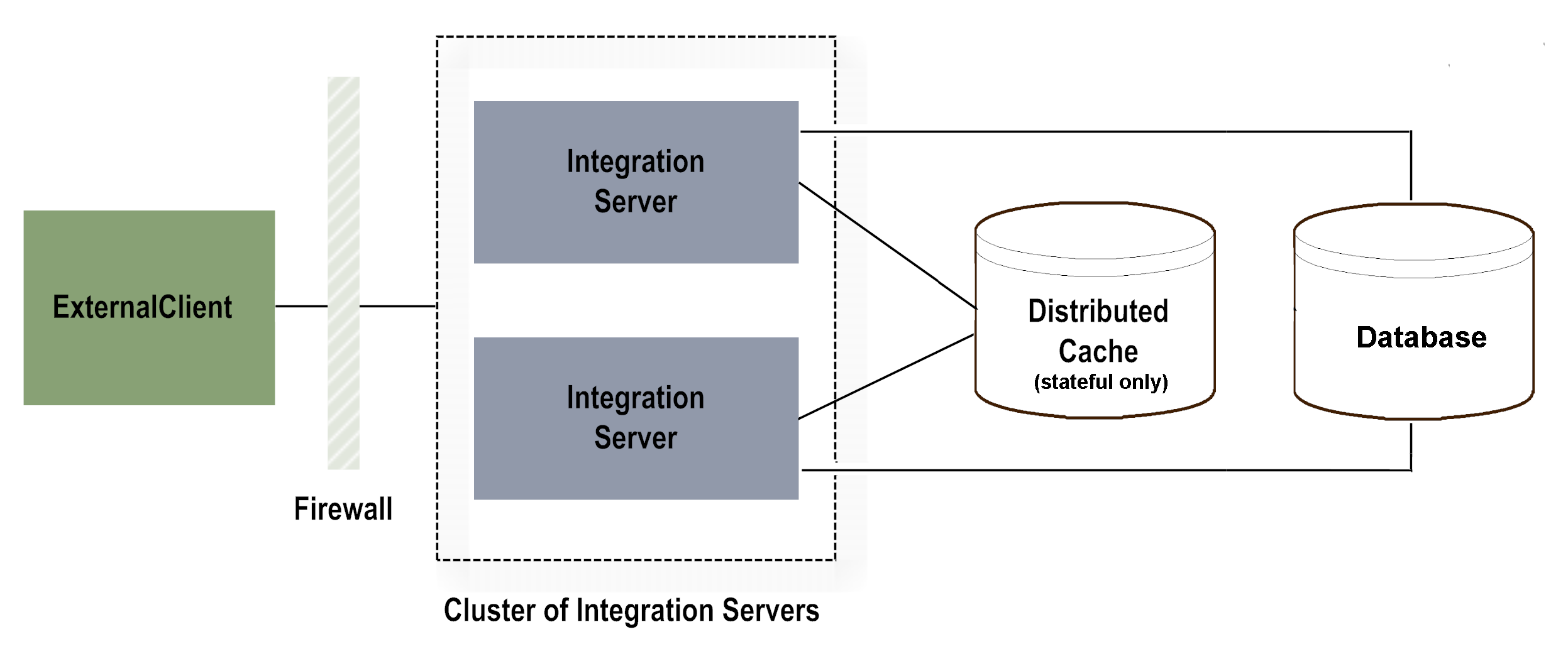What Is Clustering?
Clustering is an advanced feature that substantially extends the reliability, availability, and scalability of Integration Server. Clustering accomplishes this by providing the infrastructure and tools to use multiple Integration Servers as if they were a single virtual server and to deliver applications that leverage that architecture.
 Scalability
Scalability. Without clustering, only vertical scalability is possible. That is, increased capacity requirements can only be met by deploying on larger, more powerful machines, typically housing multiple CPUs. Clustering provides horizontal scalability, which allows virtually limitless expansion of capacity by simply adding more machines of the same or similar capacity.
 Availability
Availability. Without clustering, even with expensive fault-tolerant systems a failure of the system (hardware, Java runtime, or software) may result in unacceptable downtime. Clustering provides virtually uninterrupted availability by deploying applications on multiple
Integration Servers; in the worst case, a server failure produces degraded but not disrupted service
 Reliability
Reliability. Unlike a server farm (that is, an independent set of servers), clustering provides the reliability required for mission-critical applications. Distributed applications must address network, hardware, and software errors that might produce duplicate (or failed) transactions. Clustering makes it possible to deliver "exactly once" execution as well as checkpoint restart functionality for critical operations.
Clustering can be stateful or stateless, as described in later in this chapter. The diagram below shows stateful clustering in its simplest form.
Important:
Do not perform development work in a clustered environment. Basic namespace locking, the VCS Integration feature, and local service development are not supported across clustered Integration Servers.
Other webMethods products support the use of clustering to synchronize requests, transactions, notifications, and so on across Integration Server instances in the cluster. For more information about whether a particular product supports clustering and how to configure that product for a clustered environment, see the product documentation.
